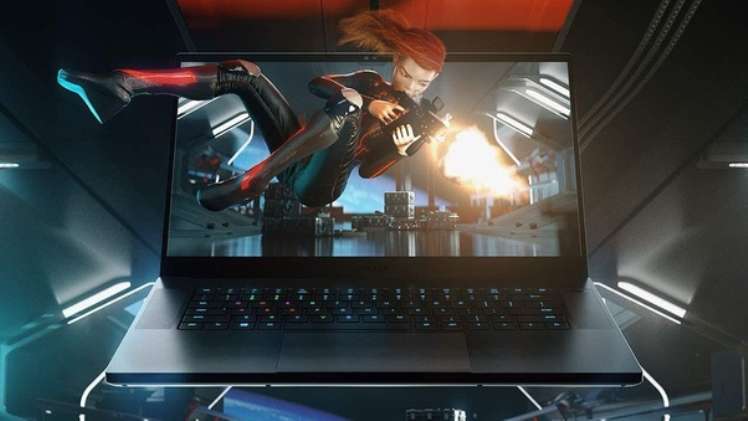How to choose your gaming laptop?

Which screen to favor to play?
On the laptop gamer, the field of display has evolved a lot over the past two years, with the generalization of high refresh rate screens. If 144 Hz panels have become commonplace, to the point of establishing themselves by default on many devices, manufacturers are increasingly moving towards 240 Hz or even 300 Hz screens. In our opinion, few users will be users. to have the utility compared to a 144 Hz panel, very sufficient, and which already offers an excellent experience in game as in everyday applications soma prime build.
In terms of definition, 1080p remains predominant and is enough to offer a good resolution on screens of 14, 15.6 or 17.3 inches. Opting for Full HD will also make sense to allow you to pass the 100 FPS cap and thus “make profitable” the use of a 144 Hz panel or more. Some laptops, however, offer optional 1440p and 4K options. We find their interest quite limited to play on laptops, and therefore – in absolute terms – on relatively small diagonals. If you want flawless display finesse, 4K is still a must, but you’ll only enjoy 60Hz in most cases … and that’s where the shoe pinches. Between 1080p / 144Hz (or higher) and 4K / 60Hz, we recommend the first option to play.
Last point: that of display technology. The question tends to simplify over time, since now most manufacturers opt for IPS technology, which is very suitable for gaming. Some laptops rely on derivatives of VA technology (at the cost of viewing angles sometimes more narrow, but for better contrast) or on TN panels (more reactive, but limited by a rather pitiful rendering of colors).
In short, a 1080p and 144 Hz IPS screen is likely to satisfy you on laptop gaming. That’s good, it’s the most common combination. Be careful, however, to the issue of brightness, often rather weak on the entry level IPS.
What is the best graphics card?
In this area, it is Nvidia that still reigns supreme, with low-power chips overall more efficient than the few GPUs offered by AMD on laptops. We hope that the thing will evolve, but for the moment, our recommendations therefore quite logically go towards the products of the founder with the chameleon, overrepresented.
On the entry level, to play competitive or low-consumption titles in 1080p without forcing too much, a GTX 1650 will do the trick. However, it will not be necessary to make some concessions in terms of display quality on the most greedy AAAs. On the mid-range, the GTX 1660 TI and RTX 2060 (or even RTX 3060 since early 2021) are the most common chips. The advantage of the second is that it allows ray tracing to be activated in fairly good conditions in Full HD, but not all players are necessarily interested in the effects popularized by Nvidia. The RTX 2060 is also very efficient in Full HD on the most demanding titles. The [pii_email_4bd3f6cbbb12ef19daea] is enough for its part to animate the main part of the games in 1080p without big concession in the settings, and s’
On the high end, Nvidia recently introduced its RTX 3070 and 3080, which will give you better performance at 1080p and unlock access to Ultra HD. Beware of their TDP, however, which may, depending on the settings preferred by the manufacturers, completely change the expected performance.
Which graphics card?
Unlike the laptop GPU market, the low-power processor sector now benefits from a fair amount of equity between AMD and Intel, with 10th generation processors at Intel (soon to be complemented by 11th generation Tiger Lake-H chips) and Ryzen chips. fifth generation at AMD.
If Intel retains a slight advantage in terms of performance in games with its Intel Core, AMD and its Ryzen have managed to be significantly more efficient than in the past for gaming and in many cases manage to take the advantage in video editing. , calculation and overall on heavy tasks taking advantage of the many cores and threads they embed.
Another advantage in favor of AMD: the price. Its new processors offer a flattering level of performance, on machines often sold at slightly lower prices than Intel models. Opting for AMD in 2021 can therefore be a very good idea, as long as you focus primarily on Ryzen 7 5800H or Ryzen 9 5900HS (or higher), to be sure to enjoy the best performance in the game. At Intel, we recommend the Core i7-10750H and i7-10875H, for lack of new generation chips at the time of writing.
The Core i9s seem especially interesting for players who also want to perform heavy editing or additional computing, but these are however tasks that the Ryzen 7 5800H, for example, can also perform very well … and often at a lower price. For less demanding users, switching to 10th or 11th gen Intel Core i5 “H” or fifth gen AMD Ryzen 5 may finally be enough.
8, 16 or 32 GB of RAM?
This year, most manufacturers opt by default for 16 GB of DDR4. A quantity of RAM which is gradually becoming the standard for playing comfortably, while 8 GB is getting a little tight. If you choose an entry-level laptop with just 8 GB of RAM, don’t panic. Not only will you still be able to play most of the games without any problem, but you will always be able to increase this amount of RAM later by purchasing new SO-DIMM format modules.
You will notice that some models have 32 GB of DDR4 and frightened 5e. These are usually devices that are primarily aimed at creatives, who will need this ability to perform heavy video editing or computation without a hitch. It is also for the same public that options sometimes going up to 64 GB of RAM are available on the sites of the manufacturers. To play, 16 GB is more than enough!





